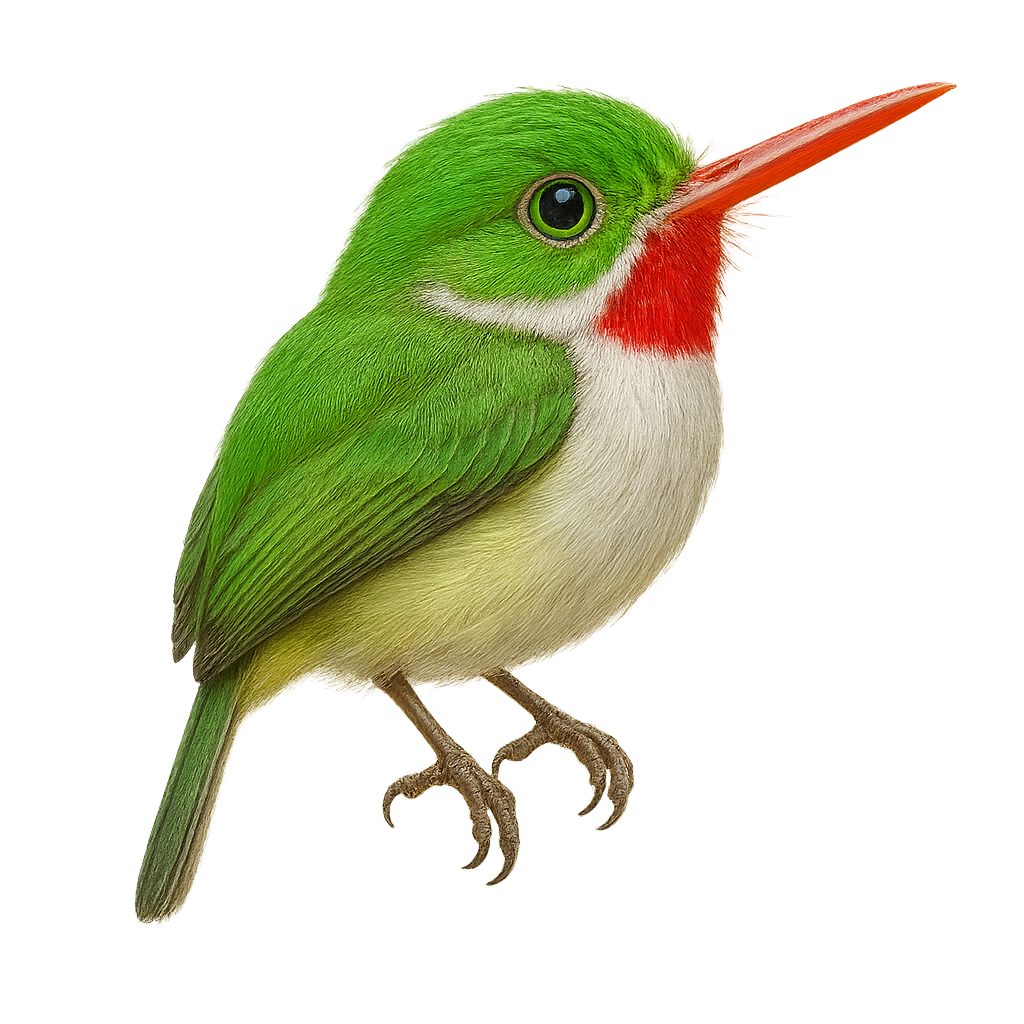Your wildlife photography guide.
Explore the jamaican tody in detail, study its behavior, prepare your shots.
Where to observe and photograph the jamaican tody in the wild
Learn where and when to spot the jamaican tody in the wild, how to identify the species based on distinctive features, and what natural environments it inhabits. The WildlifePhotographer app offers tailored photography tips that reflect the jamaican tody’s behavior, helping you capture better wildlife images. Explore the full species profile for key information including description, habitat, active periods, and approach techniques.
Jamaican Tody
Scientific name: Todus todus

IUCN Status: Least Concern
Family: TODIDAE
Group: Birds
Sensitivity to human approach: Suspicious
Minimum approach distance: 5 m
Courtship display: March to April
Incubation: 20-21 jours
Hatchings: March to May
Habitat:
Humid forests, mangroves, wooded areas
Activity period :
Primarily active during the day, with peak activity in the morning and late afternoon.
Identification and description:
The Jamaican Tody, or Todus todus, is a small bird endemic to Cuba, known for its bright green plumage and vivid red throat. Measuring about 11 cm in length, it is easily recognizable by its broad, flattened beak, perfect for catching insects. This small bird primarily inhabits humid forests, mangroves, and wooded areas, where it feeds mainly on insects and small fruits. Its song is a soft "tot-tot," often heard in the undergrowth. Although its population is stable, preserving its natural habitat is crucial for its survival.
Recommended lens:
400mm – adjust based on distance, desired framing (portrait or habitat), and approach conditions.
Photography tips:
To photograph the Jamaican Tody, it is advisable to use a 400 mm lens or longer to capture detailed images without disturbing the bird. Look for wooded areas or mangroves where it is often active. Be patient and discreet, as although suspicious, the Tody can be observed closely if you remain still. Take advantage of the natural morning light to achieve vibrant colors and good contrast.
The WildlifePhotographer App is coming soon!
Be the first to explore the best nature spots, track rutting seasons, log your observations, and observe more wildlife.
Already 1 430 wildlife lovers subscribed worldwide

